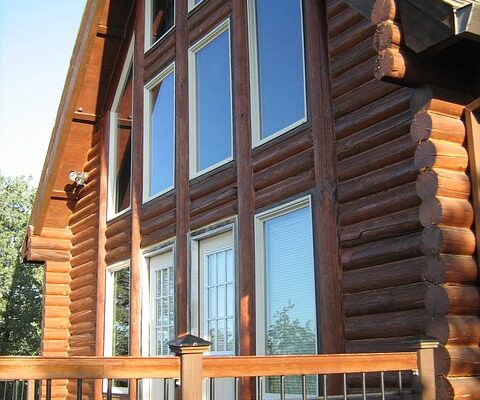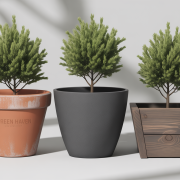Log cabins trace back centuries with their construction. Still, despite these magnificent homes’ durability, they will only withstand that longevity with adequate care and upkeep. Go here for tips on log home maintenance tasks.
Many misconceptions follow log homes, including the fact that these are timeless, meant to stand the test of time with little to no maintenance, impervious to poor conditions.
Any structure needs to be kept up, each dependent on its construction. A log home will have different care from a property that consists of materials other than logs in perhaps a suburb or city locale.
The biggest threats to a log home include the sun’s intense rays, moisture, pests and microorganisms, and extreme temperatures. It’s not necessary to have a professional toolkit to perform basic log home care and extend its longevity.
You can do much in a DIY capacity unless you see major damage or are unsure how to handle a circumstance. Then contacting a professional is critical to avoid compromising the structure’s integrity.
Tips On Upkeep Tasks to Support Your Log Home’s Longevity
All properties require care and upkeep. How you care for them will depend on the materials used for their construction. With log homes, specific maintenance must be implemented to enjoy an extended lifespan.
While you can do many of the tasks in a DIY capacity, it’s important to reach out to experts if you have a complicated issue or need help caring for your new log property.
Please visit https://www.superiorlogrestorations.ca/ for details on the repair, maintenance, and restoration of these homes. Here are a few tips on basic care and upkeep as a homeowner.
Exterior cleaning
One of the critical parts of upkeep is an annual exterior wash. Performing this cleaning helps retain the effectiveness of the sealants and staining, in turn extending the lifespan of the logs.
When washing the exterior, you’ll remove grime, cobwebs, droppings from fowl, pollen, mold and mildew, all of which can prematurely deteriorate the surface.
While cleaning, you can detect possible defects in the wood that need addressing, including dry rot, damage from pests, or failed caulking. You can then reach out to a professional for repairs before these worsen.
If you’re considering re-staining or sealing, it’s essential to wash the exterior so that you can then get a good application capable of withstanding the test of time.
Mold/mildew
Pay attention for mold and mildew to try to catch it in the earliest stages. When it’s caught sooner rather than later, it’s easier to determine the root cause and make more effective corrections.
Perhaps your sprinkler system is directed toward the home, the cabin is not fitted with a gutter system, there’s splashing with the downspouts, and plantings that are located too close to the structure, not to mention an exceptionally humid climate.
When these underlying causes are corrected, mold and mildew will be less likely to develop. When planting around the house, you want to keep foliage cut back roughly 2 feet from the house to allow plenty of space for air to circulate.
All log homes should have a gutter system to prevent water from flowing along the wood. It’s also vital to pay attention to where the water from your sprinkler system ends up; for one thing, you want to avoid wasting water.
Infestation of pests
Log homes draw infestations of pests including termites, carpenter bees and ants, and beetles. Signs that these insects have invaded you include odd-sized holes with sawdust piles, and you’ll notice the occasional pest lingering in the area.
A common cause of bugs being drawn to the wood is when it becomes moist or starts to rot. Soft wood is appetizing for these creatures, easy for them to destroy.
When you keep the wood adequately stained and sealed, moisture will have less chance to settle in, making the wood less appealing to the insects. Click to learn what you should do each year for log home upkeep.
Caulking or chinking

In between each log, caulking or chinking is used to fill the gaps as the logs shrink or shift. Over time, this material can peel away or become loose. You can try to make the necessary repairs as the owner or have this professionally corrected.
The old chinking would need to be removed. The area would need to be thoroughly cleared out and cleaned before new material can be applied. In some cases, the recommendation is that a backer rod be installed. This part allows for better adhesion and can prevent tearing.
Because caulking and chinking are critical parts of the structure’s integrity, allowing a professional to handle this part of care and upkeep is wise to ensure it’s done properly and will stand the test of time.
Final Thought
With any home, care and upkeep are essential to retain structural integrity and extend the lifespan of the property. Each construction is unique and will require individual maintenance requirements.
That’s true with log homes. The typical threats for these properties include pest infestations, extreme temperatures, intense sun exposure, moisture, and more.
Some upkeep tasks are relatively straightforward and can be handled in a DIY capacity, but others should be reserved for professional log home repair, maintenance, and restoration specialists.
With their experience, knowledge, and specialized tools and equipment, you can rest assured that the work will be performed properly and stand the test of time.













Comments